October 8th, 2021 • Music Education, Teacher Tips
Everything You Need to Know: Protecting + Preparing Your Instrument for the Winter
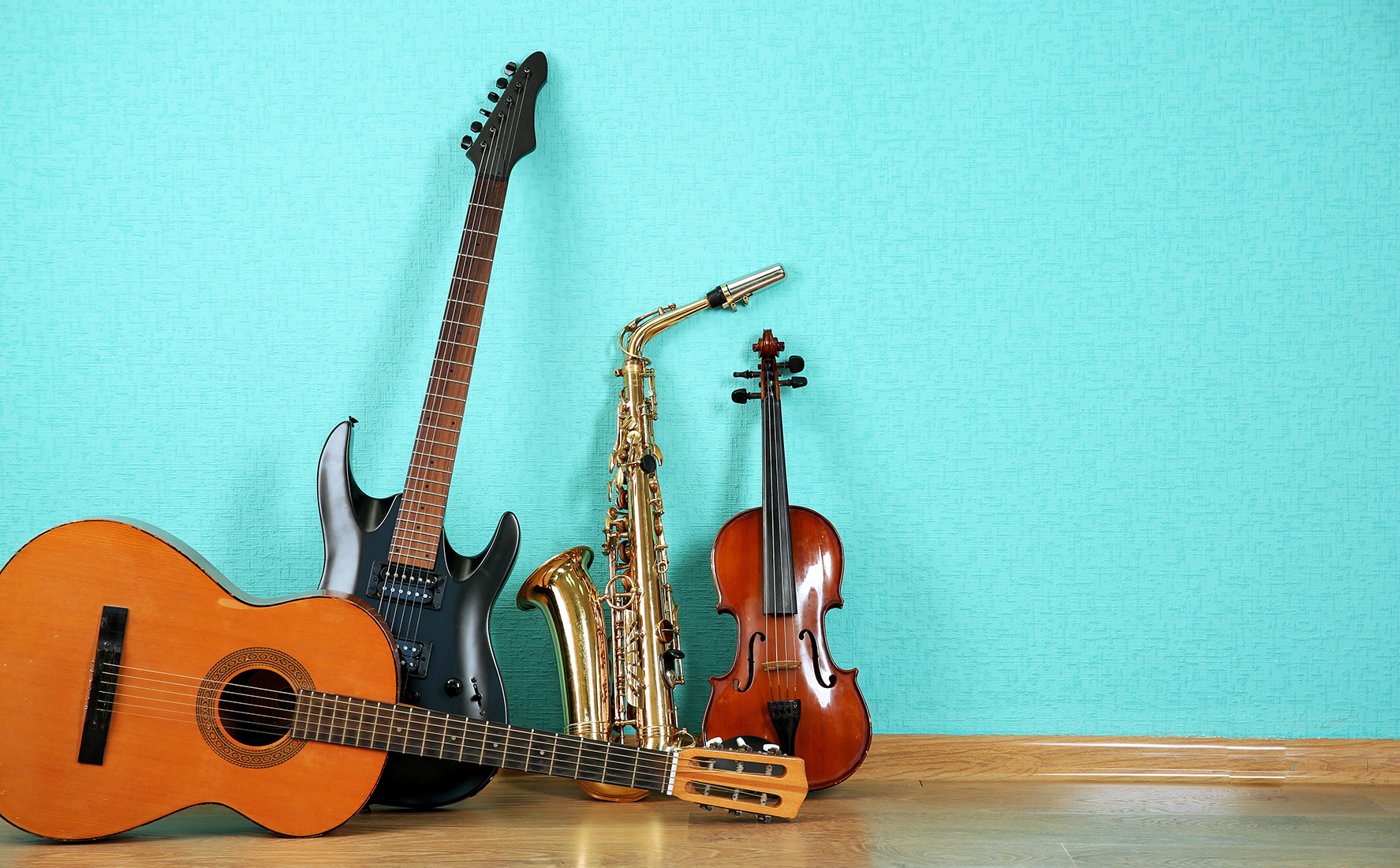
It’s finally October! Whether you are mourning the lack of warm, sunny days spent outside or welcoming the new season, it is safe to say that the fall months do bring their own type of fun! Here at the Conservatory, however, the fall season means that lessons and group classes are well underway and our building is filled with music and inspiration on a daily basis—though the summer is jam-packed with musical inspiration with events such as SoundWaves and Suzuki Institute, the school year brings a special type of excitement with students preparing in lessons for competitions, auditions, recitals, or attending group classes. This month, we are looking forward to events such as the Musical Bridges Strings Festival and a few monthly meeting classes such as Fiddle Jam and Composer Club…all of this in addition to the lessons and classes going on weekly. The fun really never stops!
Amidst all the excitement, falling leaves, and pumpkin patches comes chilly weather here in Omaha. However, the notoriously fickle Nebraska fall and winter seasons can bring deep freezes and warm breezes all in the same week—and sometimes even in the same day! As the title of this blog suggests, fall and winter can be a difficult time for our beloved musical instruments…including voices! We thought it would be interesting and helpful to share some information and a few tips on how to prepare and protect your instrument or voice from the cold weather that is quickly approaching: keep reading for some more background you should know and helpful tips from Artist-Faculty to remember when the weather cools or when your instrument is traveling somewhere with a different climate.
Science class taught us that moisture occupies increasingly less volume as it changes temperature from gas to liquid and ultimately to solid when frozen. All of this to say…cold water takes up less space! When your instrument gets cold, it actually shrinks, just like water.
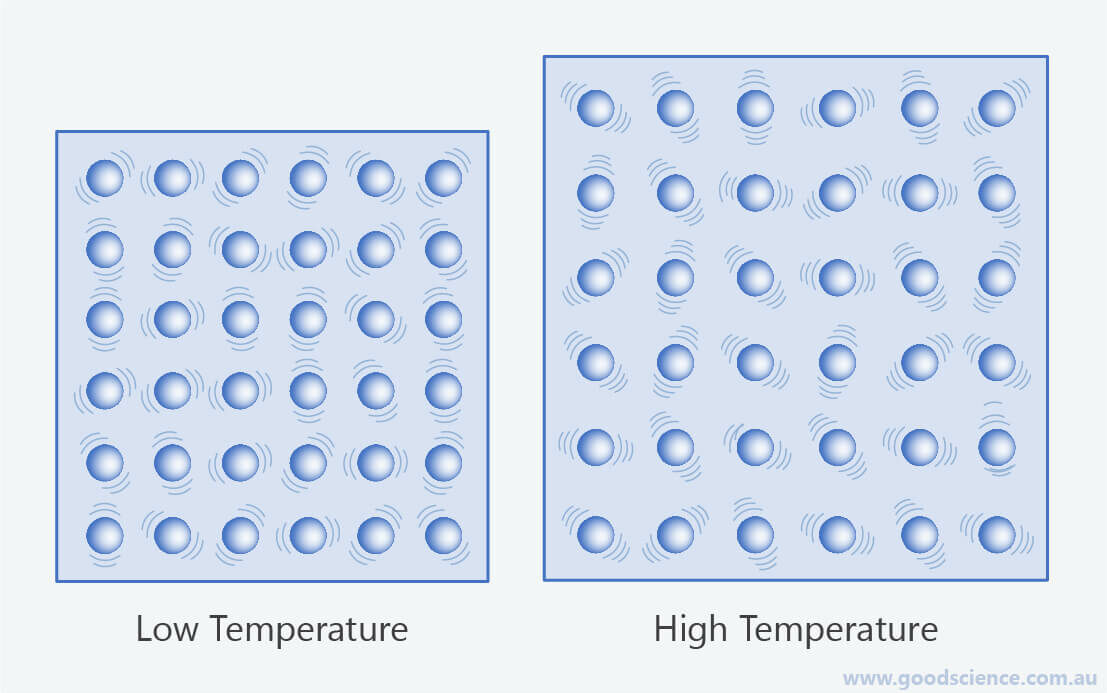
Since many instruments are made from organic product—such as wood—that absorb atmospheric moisture, they can be affected by any changes in environmental moisture…even a violin that is playing outside on a warm summer night will need care and adjustment if suddenly moved inside to a dehumidified space like a recital hall. Some instruments are even sensitive to being transported to a dry, cool climate a day or two after playing in a warmer, humid one. As a bonus, many artificial heating systems that warm the inside of buildings are extremely drying—all the more reason to keep a close eye on your instrument as the seasons change.
Atmospheric water—also known as humidity—can disrupt the delicate balance of moisture within the wooden material of instruments. The scientific explanation of this is known as Equilibrium Moisture Content (EMC), also understood as the balance between moisture found within the wood of the instrument and moisture in the air. Any time this balance is disrupted (such as when a violin travels from a dry climate to a humid one) the instrument may be affected in numerous ways—from simply sounding different to actually being damaged from a sudden or prolonged change in climate. This phenomenon is one of the most common reasons that instruments go “out of tune”…even pianos!
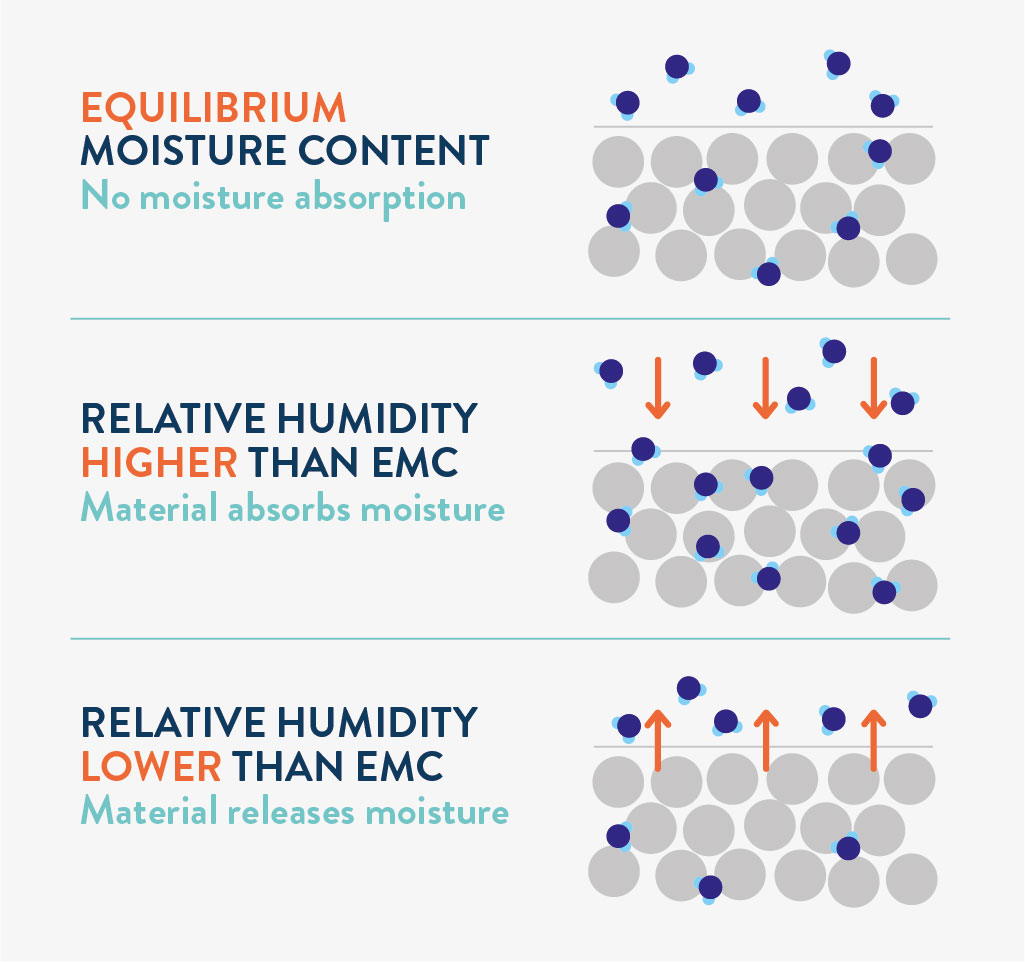
(It is important to note that brass instruments do not experience many of the humidity issues that wooden instruments do, but they are not completely excused from weather-related issues—though they are less susceptible to damage from the cold. More on this later!)
All pieces of wood on any instrument will expand with humidity and contract with cold, dry air. Strings may tighten or loosen, pegs might slip/stick, etc. Open seams or cracks are a result of this change in pressure on the instrument due to wood fibers expanding or contracting. Woodwind players might notice their instruments squeaking a bit more this time of year and reeds sounding “dry.”
With the science lesson behind us, you may be wondering how you can prevent any serious damage to your/your child’s instrument this winter season. Cello Artist-Faculty member Andrew Bukowinski shared a few tips that are helpful for string players:
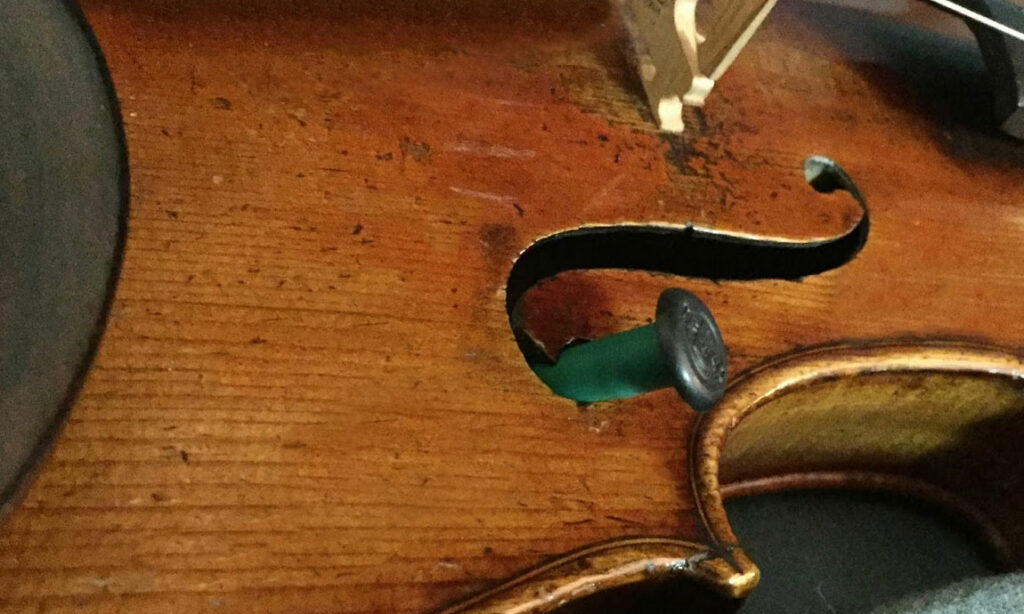
— Make sure to store your stringed instruments away from any air vents or radiators, since it can cause the wood to dry out and crack (not to mention, make your instrument super out of tune!)
— Take your instrument into the luthier (either the shop you rent from or one of the violin shops in town if you own), and make sure your pegs are well-lubricated. This will help prevent string slips during winter, which are a huge pain to deal with!
— If you know how to use them and your teacher tells you it’s okay, tune with your pegs every couple of days. This also helps prevent slipping pegs.
— The best solution to the air drying out is to keep the room humidified where you keep your instrument. You can get an inexpensive hygrometer (humidity meter) online or at hardware store to check the humidity in the room. The room ideally should stay between 35%-45% humidity. A cheap warm mist or vapor humidifier can work really well to keep the room humidified.
— If a humidifier isn’t practical for you, you can get a small rubber tube with a sponge inside of it called a Dampit, (which goes inside the f-holes of your instrument) and follow the directions of the package. Just make sure to wring it out so there isn’t excess water dripping from it, or it can damage the wood.
Photo Credit: Benning Violins
All pieces of wood on any instrument will expand with humidity and contract with cold, dry air. Strings may tighten or loosen, pegs might slip/stick, etc. Open seams or cracks are a result of this change in pressure on the instrument due to wood fibers expanding or contracting. Woodwind players experience many of the same difficulties that string players do, as their instruments are made of some organic material such as wood. Oboe + English Horn Artist-Faculty member Dr. Sara Renner shared a few tips for woodwind players to avoid any weather-related incidents:
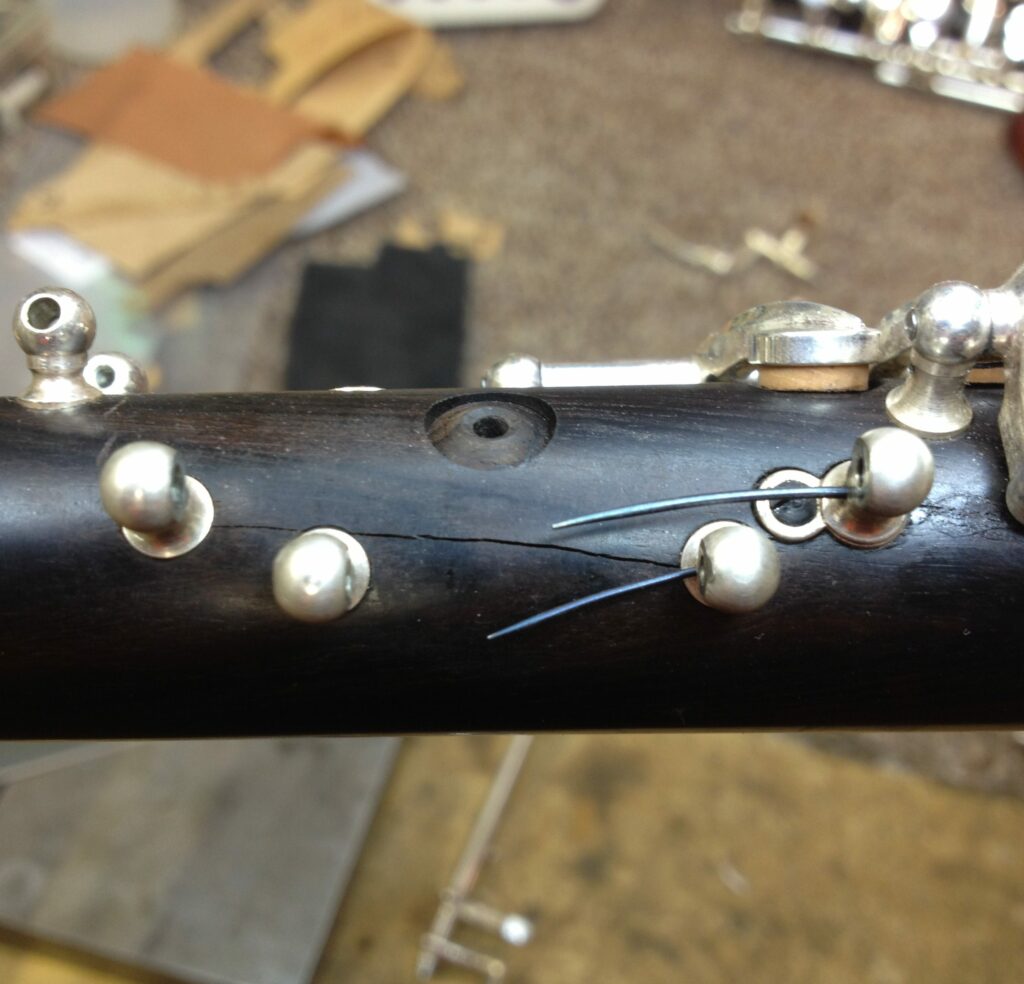
— For wooden instruments, the most important thing is to make sure the outside of the instrument is warm before you play it. Warm it with your hands or under your arm for a bit before you play your first notes. When hot air meets a cold surface, it can crack!
— If you use a humidifier, be consistent with it. Make sure it is properly filled and don’t let it dry out. It’s better not to humidify at all than to have it be irregular.
— And regardless of any temperature, never leave your instrument in the car, outside, next to an air conditioner/heater, or in any non-climate controlled space. The contraction of the wood due to temperature changes can affect the seal of the instrument, damage the wood, and even push adjustment screws out of place!
— If you use reeds, as it gets colder and buildings start switching to heat, you may need to soak them a bit longer. For double reeds, they will tend to close down in the dry and cold weather. You can keep your reed case sealed in a zip-loc bag, and that will help keep some more humidity within your reed case.
Photo Credit: Onks Woodwind Specialists

Winter can also be a challenging time for singers; not only is flu season in full swing making everyone more susceptible to colds or the flu, but the winter months can be some of the busiest times of the year for vocalists. Don’t get us started on all of those Messiah rehearsals! Here are some tips
— The voice depends on a moist environment—just think of how much easier it feels to sing in the shower! Exposing the vocal cords to cold, dry air repeatedly or for long amounts of time can cause inflammation, which is basically the bodily equivalent of a split seam on a stringed instrument. Similarly to the “external” musical instruments, the voice thrives on the right balance of moisture and hydration: the vocal cords rely on lubrication, as dehydration makes the vocal folds less agile and tougher to control.
— The dry, cold air outdoors contributes to this lack of lubrication—if you need to talk or spend a lengthy amount of time outside, try to breathe through the nose and out through the nose and mouth. When you breathe in your nose, your body filters the air, heats it up to your body temperature, and sends warm, humidified air to your larynx and lungs!
— Wearing a scarf and hat can help with keeping your neck area warm as well, as it is said that up to 70% of body heat loss happens through the neck and head! Lastly, it goes without saying that staying hydrated is especially important during the cold months.
A combination of hydration, care, and a proper warm-up routine (ask your teacher if you need guidance on this!) will allow your voice to adjust to the winter weather and reduce chances of inflammation.
Photo Credit: myUpchar
At this point it is fair to say that a certain balance of humidity and moisture content is necessary to the health of most instruments, including the voice! Contrarily to the moisture needs of vocalists, however, condensation tends to be the main enemy of brass players in the cooler weather seasons. Moveable parts such as valves and tuning slides can get stuck due to moisture freezing within them or different components sticking from the brass swelling and shrinking. Trumpet Artist-Faculty member Ian Rode-Sagastume says that regular cleaning and maintenance is the key to keeping a brass instrument in working order:
“I clean my instruments every 3-4 months to remove any gunk ( Mold! :-0 )that can build up inside the dark / damp tubing that makes up the instrument. If you haven’t cleaned your instrument before, please ask your teacher how before you start since it involves disassembling the instrument and submerging parts of it in water! Maintenance involves oiling your valves and greasing your slides so that they operate and move the way they’re supposed to. One trick I do when I finish playing for the day is to run a soft brush through the lead pipe and valve slides of my trumpets as well as a mouthpiece brush through my mouthpieces. Using these tools each day keeps the tubing dry resulting in a cleaner trumpet that won’t build up nearly as much gunk or corrode over time.”
For woodwind players, condensation from rain or snow (or just from coming inside after being outside—think of glasses fogging up indoors after spending time in the cold!) can cause rusted keys or valves, and reeds may become soggy or grow mold if exposed to prolonged or dramatic changes in moisture. Though a proper balance of humidity is good for instruments, excess moisture can be damaging as well.
Ideally, we should treat our instruments in the same way museums care for priceless and sensitive works of art—by maintaining a set degree of humidity and temperature. Though it is exciting that music can travel to the ends of the earth, all of the climate changes in between (or even right here in Nebraska!) require active measures to be taken to protect and prepare instruments for them! Have questions or concerns about your/your child’s instrument? Talk with your teacher or the shop/luthier where you purchased/rent your instrument. Keep your instrument happy and healthy this winter season!
